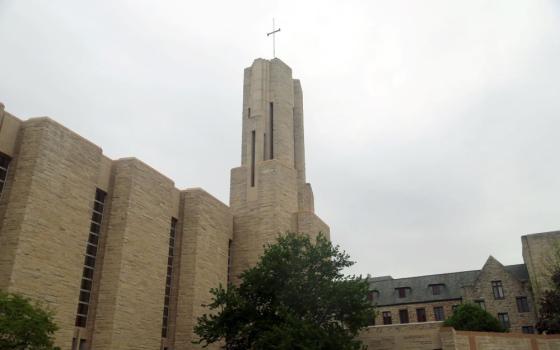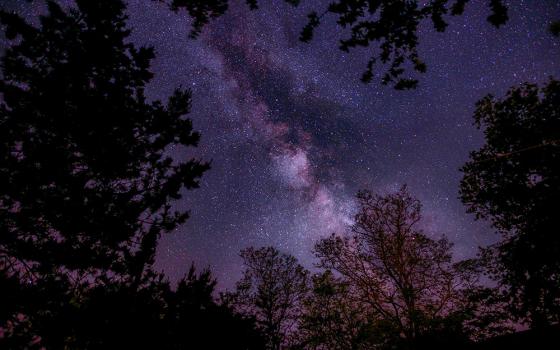 One year ago this week thousands of Buddhist monks left their temples throughout Burma and moved to the streets to lead massive demonstrations against the military regime that has run the country since 1988. Days later that regime crushed the protests, arresting hundreds.
One year ago this week thousands of Buddhist monks left their temples throughout Burma and moved to the streets to lead massive demonstrations against the military regime that has run the country since 1988. Days later that regime crushed the protests, arresting hundreds.
Through two weeks in September 2007, as tens of thousands of monks spearheaded peaceful demonstrations throughout Burma, the nation briefly ventured hope that change was finally coming.
The demonstrations, known as Saffron Revolution, were the largest since the “8888 Uprising” in 1988 when in late summer and early autumn some 200 pro-democracy protests took place in cities across Burma.
This week, on the anniversary of the latest uprising, the Asian Center for the Progress of Peoples (ACPP), a Catholic human rights organization located in Hong Kong, was among the Asian human rights watch groups, that has called out to the world not to forget the suffering people of Burma.
“Nothing has changed,” ACPP’s HotLine rights network, stated, from one year back when the Burmese monks took to the streets.
“We will not forget the efforts of the courageous people in Burma who are resisting the military regime to call for democracy.”
United Nations Secretary-General Ban ki-Moon, speaking this week in New York, said that the challenge before the world body is to push for concrete political reforms. Addressing the 63rd Session of the UN General Assembly, Ban made it clear that he would continue to push for political change in Burma.
“The challenge now is to push for political progress, including credible steps on human rights and democracy," Ban said.
In the last few days the Burmese government announced the release of a small number of political prisoners.
According to Assistance Association for Political Prisoners, a human rights group that has been following events in Burma, 700 people, including 196 monks, are still behind bars since the Saffron Revolution. Other rights groups place the number at 1,900. At least 50 persons were sentenced for their protests.
Meanwhile, US first lady Laura Bush this week urged India and China to talk directly with Burmese general and head of state, Snr-Gen Than Shwe, to try to resolve the Burmese political crisis.
"I want to urge all the neighbors of Burma, China and India and other others, to continue trying to talk to the Burmese general, Than Shwe, to see if he can't do what all the world, the international community, wants him to do," Bush told a group of Burmese dissidents meeting in New York City.
“And that is start respecting the rights of the people of Burma, start a real dialogue for a transition to democracy, talk with the opposition leaders, the people from the National League of Democracy, Aung San Suu Kyi's party, with all the ethnic groups, bring everyone to the table so that the country can start to rebuild and be the country that the people of Burma want."
Burma, also called Myanmar, is designated as one of the least developed countries in Asia with 90 percent of the population living on less than one US dollar a day.
It was on Aug. 15, 2007 that the Burmese military regime, also known as the State Peace and Development Council, announced a fuel price increase, which touched off the demonstrations.
 At first a few hundred protesters, including demonstrators from the 1988 protests, students and ordinary citizens, took to the streets. Soon afterward they were joined by monks from throughout the country.
At first a few hundred protesters, including demonstrators from the 1988 protests, students and ordinary citizens, took to the streets. Soon afterward they were joined by monks from throughout the country.
Buddhist monks are numerous in Burma and are held in high esteem.
The monks issued a number of demands, including: an apology for an incident in which months were beaten during a protest; the reduction of fuel prices; release of all political prisoners including Nobel Peace Prize laureate Daw Aung San Suu Kyi; and
immediately enter into dialogue with democratic forces.
Buddhist monks in Burma are not only spiritual figures, but have also been politically active from time to time. They have expressed their opposition to the military by refusing to take alms from them and their families.
Sympathetic to the suffering of the Burmese people, the monks last August went on the streets chanting “Metta Sutta”, loving kindness. “We can’t sit back and watch the people who sponsor us sink into poverty. Their poverty is our poverty as well.” Protests grew.
Then, on Sept. 24, about 20,000 monks led 100,000 people in the streets of Rangoon. Crowds, meanwhile, appeared in more than 25 cities in Burma.
Two days later, on Sept. 26, the military regime imposed a curfew and the crackdown began. As the military moved in over 3,000 people were arrested, at least 31 were killed, and at least 53 monasteries were raided, according to local reports.
Since then, according to ACPP, the Catholic rights group, “none of the demands of the protesters and international pressure” have been addressed.
Meanwhile the UN Human Rights Council, Association of Southeast Asian Nations (ASEAN) and other countries have filed their protests to the harsh clampdown – but without virtually any response.
The military has ruled Burma for nearly 50 years.
(Fox is NCR Interim Exexutive Editor and can be reached at tfox@ncronline.org. )
Here are some stories about Burma form the NCR archives
• Inside Myanmar: An overview of a troubled land
• Future looks bleak for locked-in land
• Burma then and now
• Villagers forced to relocate
----------------------------------------------------------------------
Useful links for Burma action
The Burma Campaign UK: Part of a global movement campaigning for human rights and democracy in Burma, with the aim to increase economic pressure on the regime by discouraging investment and tourism. They also lobby the UK government and the European Union to increase political pressure on the regime. The group maintains a "dirty list" of international companies doing busines in Burma.
Burma Issues: An organization made up of young ethnic people from eastern Burma who now dedicate their lives to educating and empowering the grass-roots communities in eastern Burma, documenting human rights abuses and acting as a bridge between the grass-roots communities and the international community. Their newsletters provide personal and insightful accounts on the sentiments and views of the people from inside.
Burma Campaign Australia: This Web site hosts comprehensive information and action on Burma.
ALTSEAN-Burma (Alternative ASEAN Network on Burma): A regional network of organizations and individuals based in the member states the Assoication of Southeast Asian Nations (ASEAN). The netowrk supports the movement for human rights and democracy in Burma. Members engage in advocacy, campaigns, capacity building and work with the democracy movement and produce resources and create opportunities for building and strengthening strategic relationship among key network and organizations and the international community.
----------------------------------------------------------------------



